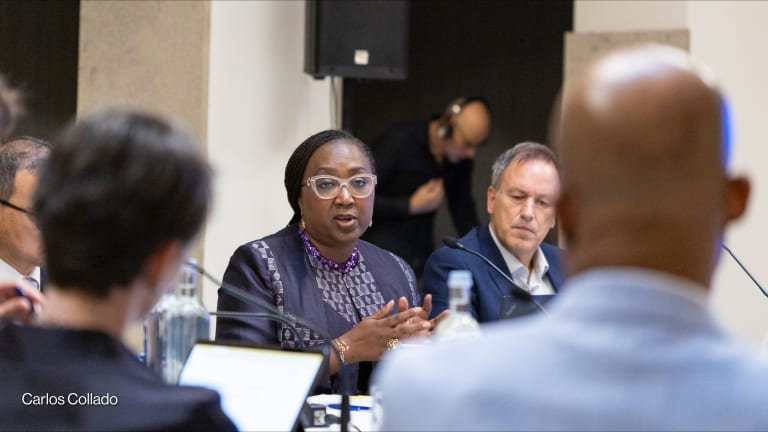
Manuel Pulgar-Vidal, Peru’s former environment minister, has a broad and global reach in his work as chief of climate and energy at the World Wildlife Fund. Pulgar-Vidal, who took on this Geneva-based position a little more than a year ago, focuses mostly on the implementation of the Paris climate change agreement.
But he also has his eye on how the effects of climate change are unfolding worldwide, including his home region of Latin America, which played host to the most recent World Economic Forum last week in Buenos Aires. Shortly after Pulgar-Vidal moderated a panel discussion on keeping commitments to climate change, he spoke with Devex on why climate change is hitting Latin America hard, and what it can do to lessen the blows.
There were three main takeaways from the conversation.
Read related coverage of the World Economic Forum:
►Q&A: Igarapé Institute chief on new bid to halve homicides in Latin America
►Venezuela government isn’t represented at WEF, but its challenges are
►Colombia's Muñoz optimistic despite multiple development challenges
1. Consider Latin America’s unique position
“Latin America is probably one of the most vulnerable regions to climate change in the world,” Pulgar-Vidal said. Brazil and Colombia are also considered the most biodiverse countries. “We have tropical glaciers melting and disappearing as one of the consequences of climate change. We have a very rich ocean, and we have a lot of native plants that depend on stabilization.”
From Colombia and Peru to Ecuador and Brazil, the damage climate change is inflicting on these countries’ diverse ecosystems is quite evident — to both their native species and the people who depend on them.
An adaption agenda with a focus on resilience is necessary, but only some countries have started to adopt this strategy, Pulgar-Vidal says.
“In Chile, they have various tactics for carbon pricing and emissions and we have heard today that Colombia has a plan to tax carbon, related to its transportation,” he said.
Still, these plans are currently more of the exception, rather than the standard.
2. Think in terms of uniting the region
Latin America served as an important launching pad for the establishment of the Paris agreement when it held the Lima COP20 conference in 2014.
“We think Paris was possible because of Lima and all of the good energy developed there to push this,” Pulgar-Vidal said.
Latin America, as a whole, now needs to maintain the short- and long-term vision that led to the success of the meeting in Lima and the Paris agreement.
“We should work towards a 2050 neutral carbon economy,” Pulgar-Vidal said. “But also, what we are seeing is some countries, and non-state actors, are really pushing the agenda and the INDCs (post-2020 climate actions from the agreement), but Latin America is not as united as it should be.”
Unlike Africa, the region lacks a long established body like the African Union to drive negotiations and benefit from dedicated work on climate change, technology and transportation. “It’s an advantage that Latin America does not have,” Pulgar-Vidal said.
This makes it difficult to make joint climate decisions and policy, but Pulgar-Vidal holds hope that countries can work on a step-by-step plan towards unity.
3. Think and act locally too
Fortunately, some sectors in Latin America — many operating on the local, city-wide level — have developed concrete road maps for adapting to and mitigating the effects of climate change.
“This is really important to have, especially in a time of a complex political context, as it is not clear how the U.S., for example, is going to complete with its work of pushing for the Paris agreement.”
The work of cities across Latin America is not massive, but it is still notable, says Pulgar-Vidal, mentioning Medellín and Bogotá’s development of Bus Rapid Transit systems in Colombia, which have now been introduced to Santiago, Chile, and Montevideo, Uruguay, and in Lima, Peru.
“We have started to improve with this, but we still don’t have clear, sustainable targets and there is a definite role for cities in dealing with that,” he said, considering a range of infrastructure and municipal work from green buildings to waste management.
“Cities, as they grow, especially big, expanding cities of more than 10 million people, are going to face major difficulties and will need to have a sustainable agenda,” he concluded.
Stay tuned for Devex’s follow-up coverage on Latin America's future and the World Economic Forum on Latin America. Read our coverage here.








